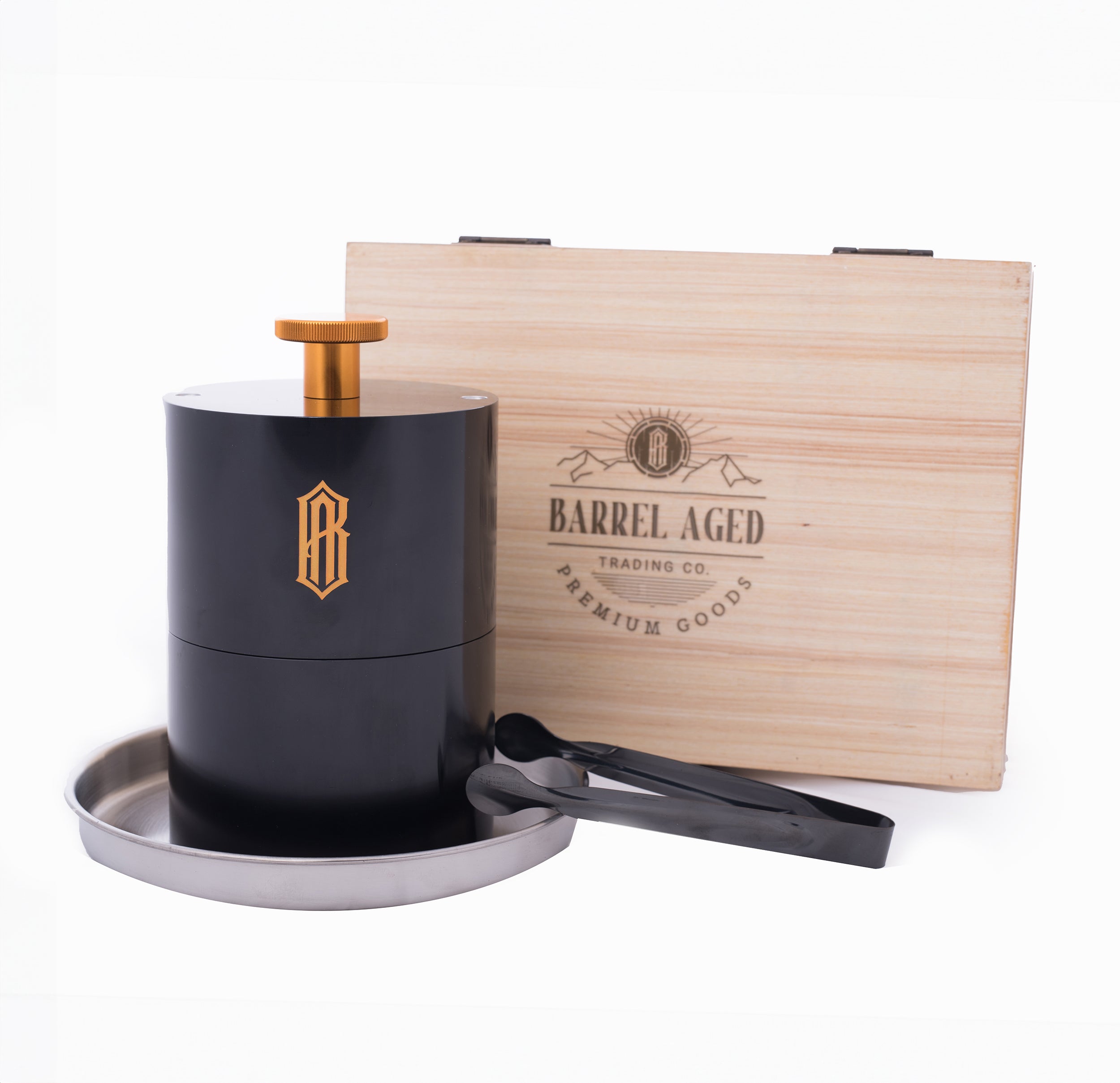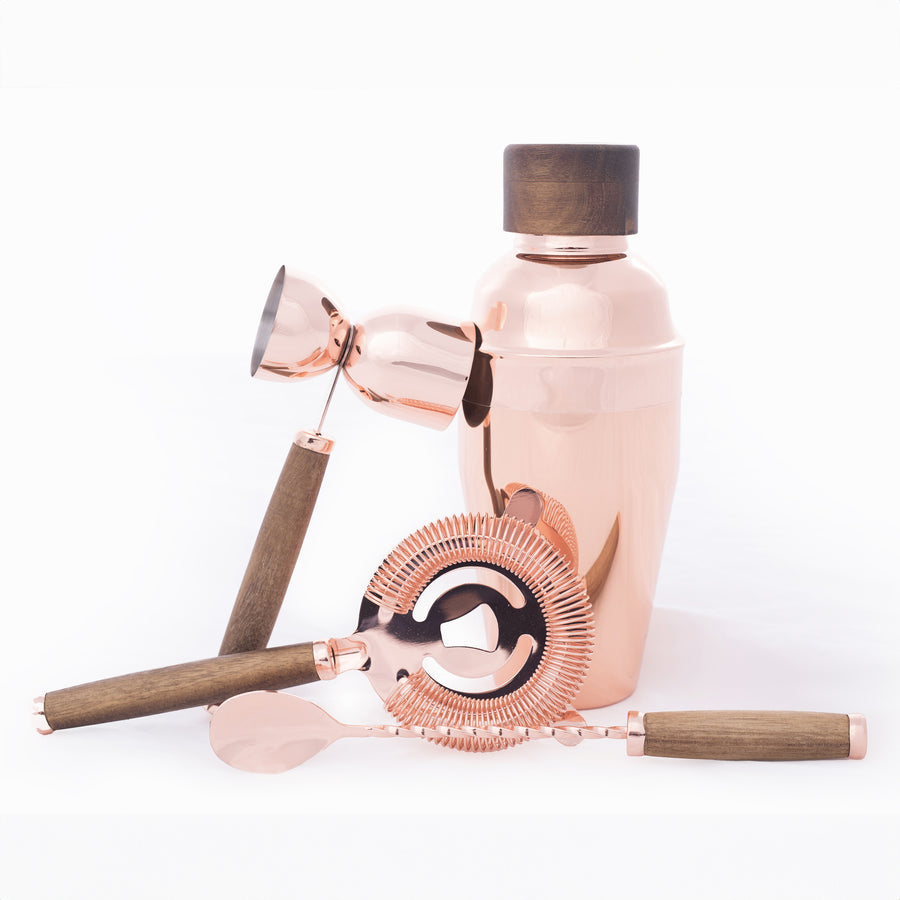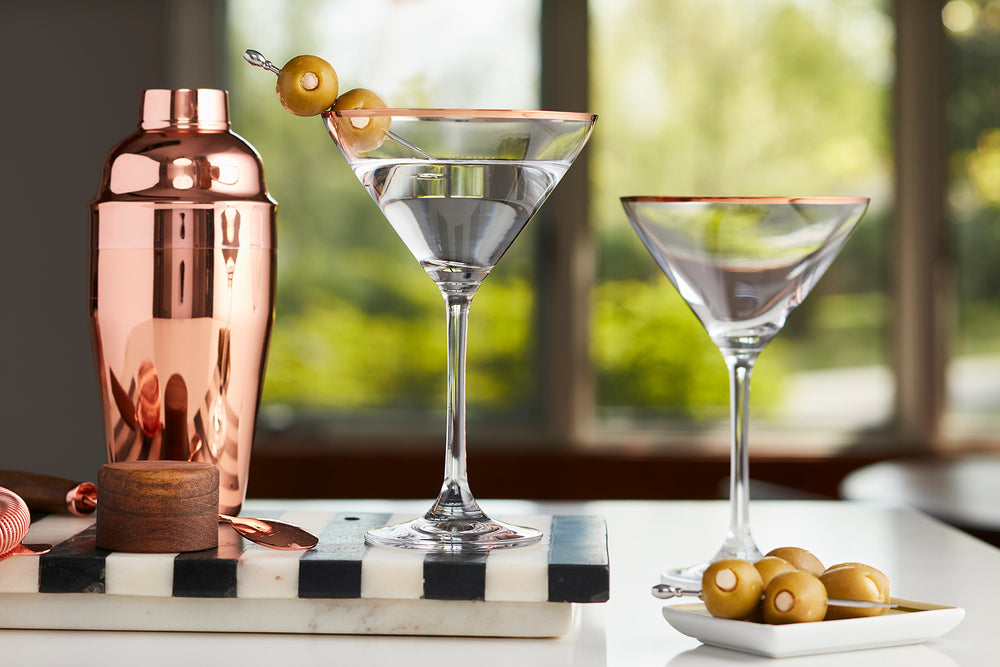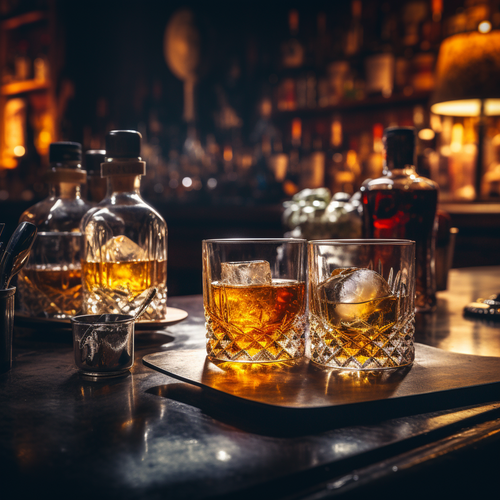
Top 7 current cocktail trends in mixology
Cocktails are fueled by trends. From the Sex and the City-fueled Cosmopolitan craze of the 90s to the resurgence of gin as a beloved spirit for craft cocktails in the 2010s, the drinks we make and order tend to move in patterns of popularity. Sometimes these trends are influenced by pop culture; other times, history plays a role, as with Prohibition.
Today, we're going to take a look at seven up-and-coming-trends that are either hot right now, or that we predict will be taking the scene by storm. You might spot these drink trends at a bar or restaurant near you. Or, you might decide to experiment at home and gain some inspiration for you own home bartending.
So what's going on in the world of cocktails right now?
1. Signature cocktails continue to trend
Craft cocktails are all the buzz. Mixologists are selecting signature spirits, inventive mixers, artisanal ingredients, and over-the-top garnishes to create one-of-a-kind menu standouts.
This movement towards hand-crafted isn't just the province of boutique cocktail bars, either. Craft cocktails and signature drinks are popping up at everything from weddings to corporate events. Even baby showers and birthday parties may have a signature drink!
For the home cocktail enthusiast, creating a 'signature cocktail' for a dinner party or backyard barbecue is a simple way to show off a unique spirit or interesting technique. You may not want to create a dozen different craft cocktails and play bartender for the entire party, but choosing a single more complicated drink lets you show off a little while keeping things manageable.
2. Elevated non-alcoholic cocktails are on the menu
Non-alcoholic cocktails (sometimes called "mocktails," a term you likely either either love or hate) are also going craft. No longer are non-drinkers stuck sipping on seltzer or soda. Mixologists are upping their game with creatively balanced drinks that don't contain a drop of alcohol.
Examples of these no-alcohol beverages include drinks made with fruit-and-vinegar-based shrubs, which can keep things from becoming too sweet in the absence of a spirit's bitterness. (Not all shrubs are non-alcoholic, though, so be sure to double-check if you're avoiding booze.) Coffees and cold brews can also help keep things balanced, as can kombucha.
Expect to see a resurgence of these no-alcohol drinks come January, when many people swear off or cut back on liquor for the month. Special glassware, festive garnishes, and creative flavors help make these dry options exciting.
3. Innovative techniques shake things up
It's not just "shaken vs. stirred" anymore. Mixologists are getting creative with all sorts of ways to combine ingredients and add flavors.
A few techniques trending now include:
- Cocktail smoking, which infuses the cocktail with scented or flavored smoke that complements the aromas and flavors of the drink.
- Barrel aging to give spirits and other ingredients a unique depth of flavor.
- A resurgence of molecular mixology, eschewing the over-the-top spectacle of the 2010s in favor of techniques that allow for interesting textures, flavors, and colors, such as foams and layered colors. (It's less 'mad scientist' and more 'Instagram-worthy visuals' that give the drinker some cool moments for their social media account.)
We definitely recommend giving some of these techniques a try for yourself! We offer cocktail smoking kits to get you started with everything you need. This skill is easy to learn when you have the right equipment, and it creates incredible flavors and a luxurious drinking experience.
4. Even more infused spirits, edible flowers, and other creative ingredients
Drink menus increasingly feature unconventional ingredients such as infused spirits, edible flowers, and herbs. These ingredients help give an unexpected twist to a classic cocktail without upsetting tried-and-true formulas... and also allow for completely new cocktail creations.
Savory cocktails are trending far beyond the Bloody Mary as bartenders integrate ingredients like cheese and olive juice in unexpected ways. Glasses might be rimmed in Parmesan or finished with a wedge of smoked gouda to complement a sweet cider.
Look for inventive bitters to add smoky or spicy notes as well. Flavors like burnt sugar, cocoa, chipotle, and herbs all add sophistication to the mix.
Elegant finishes, such as stamped ice and edible flowers, add visual appeal that's extra-important for businesses in the digital age. We're not complaining, however; a beautiful drink is a boon even to drinkers without a camera in hand.
5. Trends toward sustainability in mixology
As reducing waste becomes more of a priority in all areas of life, the cocktail world is no exception. "Zero-waste bartending" is the art of creating drinks without creating any waste. No single-use plastic is employed. Certain ingredients can be dehydrated and re-incorporated, such as peels, which can be steeped to create a tea.
Most of us aren't quite at that point, however. The real trend is toward reducing waste, rather than totally eliminating it. Eco-conscious bartending might look like eliminating those little plastic straws in favor of reusable steel, or being sure to toss those juiced lemons in the compost bin.
Another way beverage directors are reducing carbon footprint? Embracing local. Local distilleries, breweries, and other producers are increasingly important to the menus of top-tier drink programs. Certain garnishes may even be grown on-site for unparalleled freshness.
6. Influences from cocktail culture around the world
Mixology trends vary by country and culture, and bartenders are increasingly borrowing from international trends and traditions. For example, East Asian flavors like matcha, yuzu, and furikake are all being incorporated in mixed drinks here in the United States.
Of course, one region's "exotic ingredients" are hyper-local, farm-to-table staples in another. Juxtaposing the locally grown with the far-flung can create playful combinations of flavors.
7. Certain spirits are surging in popularity
Bartenders find themselves reaching for certain spirits more and more often. While vodka, whiskey, scotch, bourbon, gin, and rum will never go out of style, lesser-used spirits and liqueurs will have their time to shine, too.
In 2024, we predict we'll be cheersing with agave-based spirits like tequila and mezcal more often. Mezcal-based spins on classic Western cocktails will shake things up with tasty creations like the mezcal negroni.
Campari-based creations will also continue to pop up on menus. In addition to classic recipes, beverage directors are reaching for lesser-known choices, such as the negroni sbagliato, which keeps the sweet vermouth but swaps out gin for prosecco to lighten things up.
Also look for botanical and herbal spirits, such as elderflower liqueur and Benedictine liqueur, to continue to make a revival.
Conclusion
To us, mixology is the the art and science of cocktail creation. It's how ingredients come together to create something greater than the sum of its parts. Trends are part of the fun of being in the cocktail community: creatively working together to make new flavors and discover the next great recipe.
Just like a chef does more than follow a recipe, a mixologist does more than combine ingredients in a specific order. They experiment with innovative flavors and classic ingredients to deliver delightful drinks.
Mixology continues to evolve in exciting ways. We hope this trends report inspires you to explore your local bar scene, bring home some new ingredients, and try out a new technique or two. Cheers!






